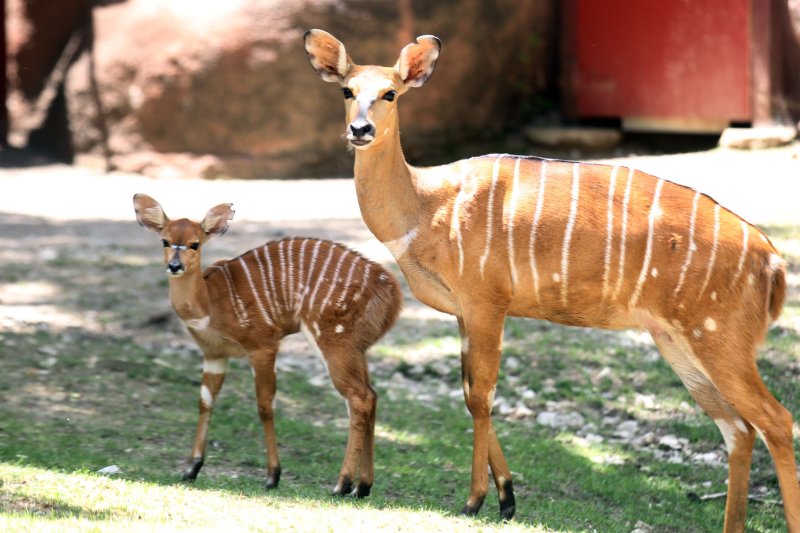Grazers employ horizontal pupil slits to keep their vision glued to ground level. File photo by UPI/Bill Greenblatt |
License Photo
BERKELEY, Calif., Aug. 7 (UPI) -- Want to distinguish between predator and prey? Look to the eyes.
According to a new study out of the University of California, Berkley, an animal's eye shape is correlated with the species' place in the ecological web. Hunters tend to boast vertically oriented pupils, while the hunted typically have horizontal pupil shapes.
The oblong shape of pupils inside the eyes of hunters like cats allow them to see in a wide range of light conditions. Whereas the round pupils of humans can expand and contract 15-fold, the eyes of cats and geckos can enact a 135- and 300-fold change in pupil size.
"For species that are active both night and day, like domestic cats, slit pupils provide the dynamic range needed to help them see in dim light yet not get blinded by the midday sun," Martin Banks, a professor of optometry at Berkeley, said in a press release. "However, this hypothesis does not explain why slits are either vertical or horizontal. Why don't we see diagonal slits? This study is the first attempt to explain why orientation matters."
Banks and his colleagues used computer models to better understand how differently shaped pupils affect how much light enters the eye.
Their findings showed that horizontal pupils allowed grazers to gain a better view of the ground around them -- a field of vision that allows them to keep an eye out for predators. As grazers bend their head down to eat, they can rotate the slit up and down, keeping it parallel with the ground.
"The first key visual requirement for these animals is to detect approaching predators, which usually come from the ground, so they need to see panoramically on the ground with minimal blind spots," explained Banks. "The second critical requirement is that once they do detect a predator, they need to see where they are running. They have to see well enough out of the corner of their eye to run quickly and jump over things."
The findings also showed that vertically oriented pupil slits maximized depth-of-field cues that are so important for predators looking to accurately gauge distance to their targeted prey.
These vertically enhanced cues are especially beneficial for predators close to the ground. Whereas most crouching cats have vertical slits, taller predators like lions have rounder pupils like dogs.
The new research was published in the journal Science Advances.















